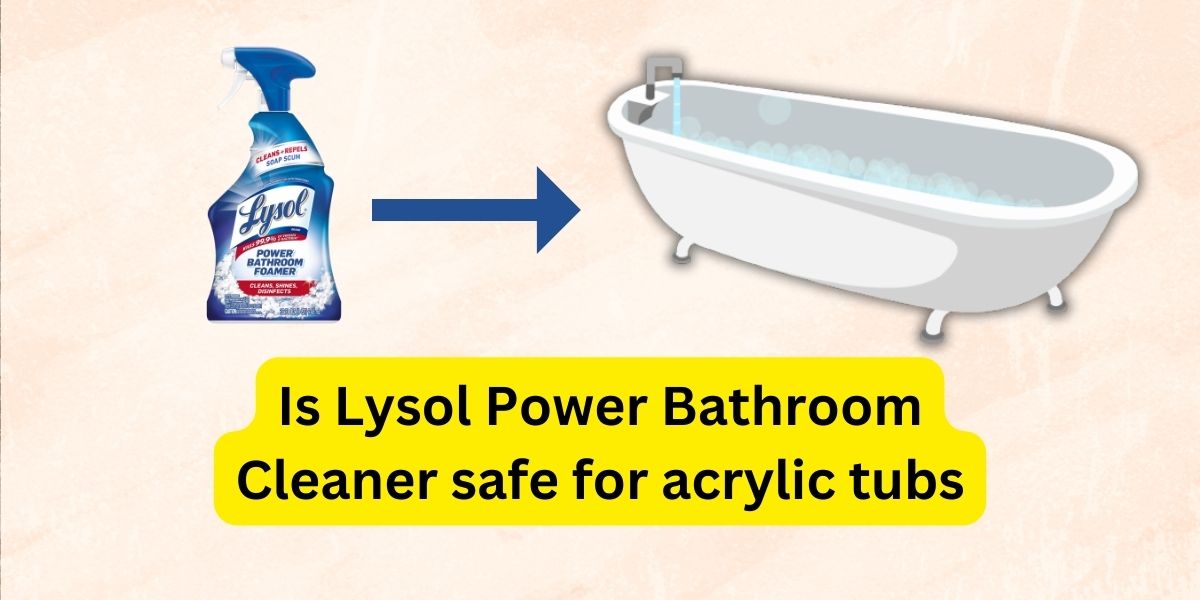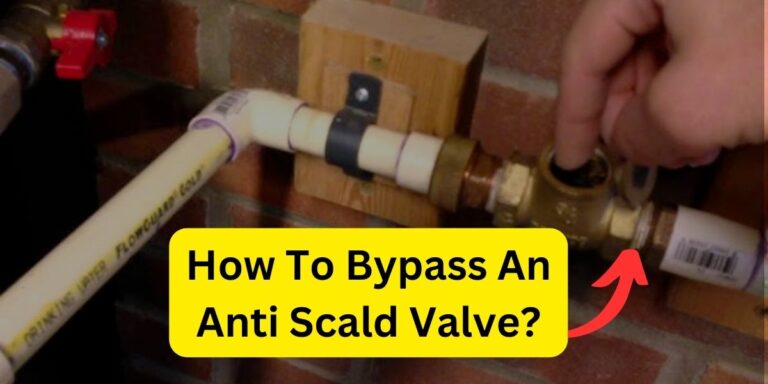Is Lysol Power Bathroom Cleaner Safe For Acrylic Tubs?
Lysol Power Bathroom Cleaner can be used safely on acrylic tubs if you keep in mind certain precautions. According to the product label, Lysol Power does not harm most surfaces when used as directed.
However, cleaners should not remain on acrylic tubs for extended periods, as this can cause damage over time. With limited contact time and thorough rinsing, Lysol Power may be used cautiously for occasional deep cleaning of acrylic bathtubs.
Active Ingredients in Lysol Power Bathroom Cleaner

When looking at the safety of any cleaning product, it’s important to know what’s inside it. Lysol Power Bathroom Cleaner contains bleach, surfactants (detergents), and fragrances. The bleach is there to act as a strong cleaner and whitener to break down tough stains. Surfactants help lift away grease and dirt. The fragrances obviously make your bathroom smell fresher.
Now bleach is a proven cleaning and disinfecting agent, used commonly around households. And when used properly, it can be effective on soap scum and hard water stains. But here’s the catch – that the “when used properly” part is key. While bleach has its strengths, it can also damage many surfaces if used too frequently or aggressively.
Related article: What Cleaners Are Safe for Acrylic Tubs?
Using Lysol Power on Acrylic Tubs: The Pros
Let’s start with the benefits of using Lysol Power Bathroom Cleaner on an acrylic tub. First, it does contain that bleach agent to bust through grime. For really stubborn soap scum or set-in stains that other cleaners struggle with, the bleach in Lysol Power can help dissolve them when used occasionally in targeted areas.
Additionally, Lysol Power kills 99.9% of viruses and bacteria. If someone in my family is sick, I’ll often do a thorough bleach cleaning on our bathroom to help kill germs and prevent their spread. So from a disinfecting standpoint, bleach is very effective.
Lastly, I can’t deny that Lysol Power simply works fast at cutting through layers of scum, soap, and stains. I once had some mildew build up in the grout lines around my tub that I let go for too long. I pulled out the Lysol Power, let it sit for a few minutes, and was able to scrub those grout lines clean again. When used sparingly just for tough cleaning emergencies, it can be helpful.
Read more: What Not To Use On Acrylic Tubs? 5 Things To Avoid
Using Lysol Power on Acrylic Tubs: The Cons
However, there are also some definite downsides to using Lysol Power regularly on an acrylic tub. First, the bleach content can be damaging to acrylic over repeated use. When bleach sits on acrylic for extended periods, it can cause discoloration and fading to the finish.
Secondly, the fragrances and detergents leave behind a soapy film or residue, even after rinsing. This build-up is abrasive and eats away at the acrylic’s surface over time.
The third issue is that consistent bleach application wears away at the top coat layer of the acrylic. All quality acrylic tubs have a microscopically thin top coat that helps protect the surface from damage. Bleach breaks this top coat down with repeated use.
Read this guide: Using Magic Erasers on Acrylic Bathtubs: My Experiences
Best Practices for Using Lysol Power Bathroom Cleaner
If you do choose to occasionally use Lysol Power Bathroom Cleaner on your acrylic tub, there are a few best practices to follow.
First, always spot-test a small inconspicuous area and allow it to sit for a few minutes. Check for any damage or discoloration before applying to the whole tub.
Secondly, dilute the Lysol Power with water at a 1:1 ratio or less. Never apply it at full strength. This helps control the intensity.
Work in sections and thoroughly rinse each section after sitting for 3-5 minutes before moving to the next section. Completely rinse the entire surface when done to prevent residue build-up.
Limit usage to 1-2 times per month maximum. Do not use Lysol Power as your daily or weekly acrylic tub cleaner. Overuse will damage its surface over time.
Safer Alternatives to Lysol Power for Acrylic Tubs
If you are looking for a gentler way to routinely clean your acrylic bathtub, try these safer alternatives:
- Mild dish soap diluted with warm water can lift away most dirt and soap scum, without damaging acrylic finishes.
- For mineral deposit stains, make a paste with baking soda and water. Let sit for 5 minutes before scrubbing and rinsing. The abrasiveness of baking soda cleans without scratching.
- For shine, wipe down your tub with white vinegar after cleaning. The acid in vinegar breaks down residue and disinfects.
- Look for commercial tub cleaning products specifically labeled “acrylic safe” like Scrubbing Bubbles Tub & Shower Cleaner or Clorox Tub & Tile Cleaner. Avoid anything “abrasive.”
Conclusion: Use Lysol Power Sparingly and With Caution
In conclusion, while Lysol Power Bathroom Cleaner is an effective heavy-duty cleaner, it should be used cautiously on acrylic tubs. When applied improperly or too frequently, the bleach and chemicals in Lysol Power can actually damage acrylic over time.
For routine cleaning, gentler soaps or specifically labeled “acrylic-safe” cleaners are better choices. However, for the occasional deep cleaning need, Lysol Power can be used sparingly if diluted and rinsed thoroughly. By following best practices and limiting its use, you can safely take advantage of its cleaning strengths while maintaining the beauty of your acrylic tub.
When in doubt, always spot-test Lysol Power first and err on the minimal side to keep your acrylic looking its best for years to come. And be sure to implement an ongoing routine with acrylic-friendly cleaners, and protectants and care for a long-lasting, glossy bathtub. What cleaning methods or products have you used successfully on acrylic tubs?

William J. Bullock is a licensed plumber with over 15 years of experience installing and repairing bathtubs. He runs his own plumbing company in Greenville and serves residential and commercial clients. William is dedicated to providing honest, transparent advice to help homeowners make informed decisions about their bathroom renovations.
He has established expertise in selecting bathtubs, planning custom installations, diagnosing issues, and completing repairs. William aims to share practical tips and reliable recommendations based on extensive hands-on work. When he isn’t on a job site, William enjoys spending time with his family and volunteering at local community events. He takes pride in delivering quality service and enjoys helping people upgrade their homes.







